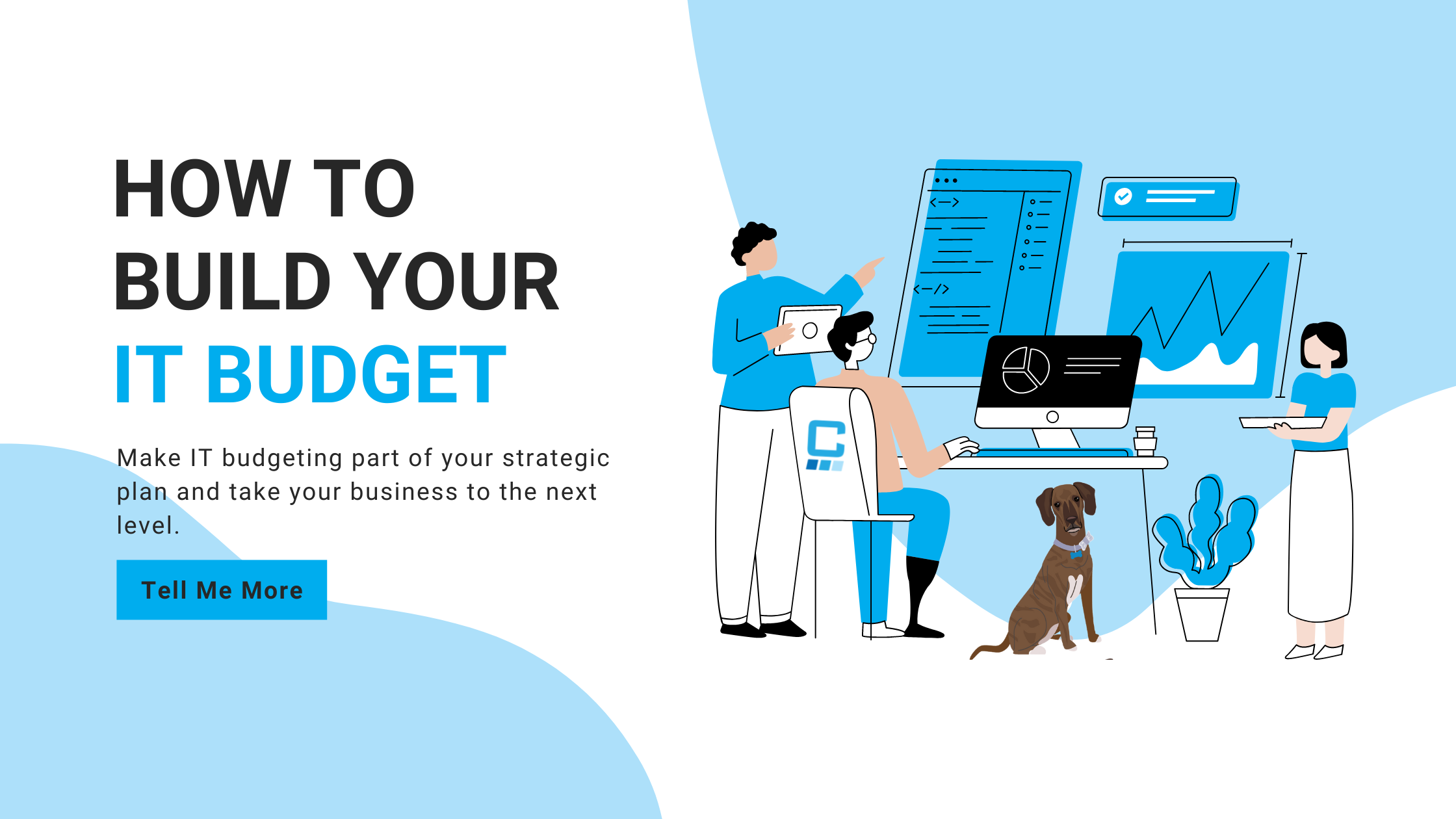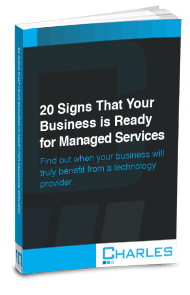
As your business progresses and more processes become dependent on your digital environment, your IT department will find itself with a bigger role to fill. You’ll have to plan for network changes, new technology investments, and increased software training. The IT strategies that may have worked in the past might not fit your business model anymore, and it's important to give yourself enough time to plan for any change.
An integral part of your plan is having a budget that outlines what's needed, when, and how it will need to grow as your company grows. You should review your IT strategy annually and prepare a new budget to reflect your needs.
With that in mind, here are a few tips that may help focus your IT budgeting and planning practices each year:
Review Last Year’s IT Budget
Looking back at what you allocated for IT in the past year will help you determine what recurring or anticipated costs will carry over into the new one. For example, you may have spent money on equipment, such as new computers or servers. You can determine when updates will need to be made and when they'll be considered end-of-life, meaning you'll need to make a new investment.
Pro Tip: If you're planning on doing any hiring, make sure you allocate funds to purchase the necessary hardware and software licenses for new employee onboarding.
Common recurring expenses to consider are:
- Cloud Storage Fees
- Software License Renewals / Software-as-a-Service (SaaS) Subscriptions
- URL Registration
- Content Management System Fees (CMS)
As a business owner, you should always be vigilant about hardware reaching end-of-life or software becoming outdated as they can weaken your cybersecurity posture.
Determine Your Business Needs
After you’ve updated your IT budget to account for recurring costs and updates, you'll want to fill in the gaps and identify new opportunities to strengthen your cybersecurity hygiene. We recommend making a list of IT components you need based on your budget. Consider equipment and software critical to your operations, such as desktops, wireless routers, servers, operating systems, and productivity software.
Also, keep in mind the following criteria when creating your list:
- Who is responsible for handling and maintaining new items?
- What are the integration requirements with other devices?
- Are there any compliance requirements or updates needed in the new year?
Download our free eBook!
Our free eBook provides you insight into recognizing the 20 Signs That Your Business is Ready for Managed Services.
Drafting a comprehensive list will help you prioritize items in the procurement process.
Consult with Other Departments
Your IT department doesn't operate in a silo -- none of us do! IT processes will be affected by how teams in your organization prefer to work and what they have planned for the future. By achieving alignment between your IT team and other departments in your business, you'll be able to more accurately plan for your IT expenses.
For example, if the HR department wants to invest in a new HR management software system, there may be additional costs for project management, staff training, maintenance, and software implementation.
Pro Tip: Create an IT Roadmap to map out your IT strategy.
Have a Deep Understanding of Vendor Price Models
Cost overruns in items such as cloud services are partly due to the inability to understand vendor price models. In truth, these models can be complex. To avoid overruns, you should be able to provide a clear-cut price model that you can explain to upper management as you outline your budget.
Track Data to Measure ROI
Every department must analyze its budget to ensure they’re on track with spending and aware of expense patterns. Your IT department should pay attention to this, particularly regarding the return on investment made in IT.
For example, you can determine if you’ve saved money from a big technology investment by tracking productivity metrics using appropriate analytics tools. A successful expenditure — i.e., one that helps your bottom line — can justify funding more projects in the future.
Team Lead, Tom, talks IT budgeting and roadmaps for strategic planning in his recent article.
A well-thought-out IT budget will save you the trouble of an unnecessary investment. If you have limited experience with forecasting and mapping out IT budgets, consider partnering with an experienced managed service provider (MSP) like Charles IT to assist you in finding hidden costs and making accurate predictions. Call us today, and we’ll help you create a solid budget for the coming year.
Curious about working with an MSP? We'd love to talk!
Editor's Note: This post was originally published in October 2019 and has been updated for accuracy and comprehensiveness.






